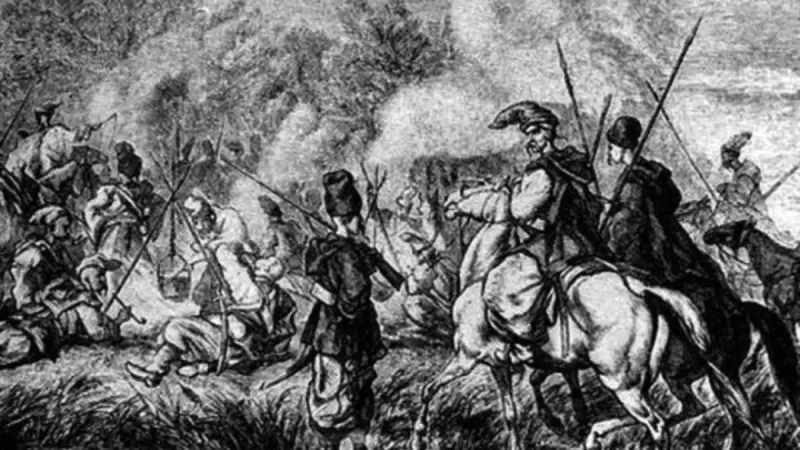Uprising on the Right Bank or Koliivshchyna
At any stories There are reasons and very deep roots. The problems of Little Russian-Polish relations have been going on since Andrusov, since 1667. According to the truce concluded there, Little Russia was divided along the Dnieper - that which was to the west remained with the Poles, that which was to the east became a territory with broad autonomy as part of the Russian kingdom. Somehow it so happened that in the Left Bank Hetmanate it was quieter, calmer, freer and more satisfying, but on the Right Bank ... Throughout the end of the 17th and first half of the 18th centuries, Poland was in agony, the model of governance that existed there turned the state into something amorphous and anarchist. Neighbors began to look at this territory with unhealthy interest, and the people themselves were not enthusiastic about what was happening. As a result, the protege of Russia, Stanislav August Poniatowski, was elected king of Poland. This caused indignation among some of the gentry and magnates, and away we go.
Bar Confederation
The new Polish king, feeling the power of Russia behind him, decided on a terrible thing - to strengthen the central government at the expense of the magnates and the gentry. It is clear that the answer was a riot, a number of magnates with private armies gathered in the city of Bar in the Vinnitsa region and created a confederation. The rebellion is rather strange, in fact against the king, but officially against Russia, in order to stop the reforms, but the dissidents were the first to suffer. So in the Commonwealth they called those who were not Catholics. And the Confederates struck the first blow against them - priests were killed and imprisoned, people were tortured, villages and towns were devastated ... On a wave of atrocities, Koliivshchina was born, a phenomenon no less terrible than Polish punitive actions.
Different opinions
And the Jews have a right to it, the massacre in Uman was terrible. The Poles also have their own opinion:
And among the Ukrainians, for whose historians this is a national liberation uprising without any semitones. The reality was more prosaic and scary. Economic oppression, multiplied by religious and national oppression, bore fruit - the people were terribly embittered, and the outright massacre that the Confederates staged on the Right Bank became the trigger. Hope for success was given by Russia's intervention in Polish affairs, and it flared up.
Leaders
There were two of them - Ivan Gonta, a court Cossack who joined the rebels in Uman and Maxim Zaliznyak, also a Cossack, but Zaporozhye. From the age of 15 in the Sich, he gathered a small detachment of Haidamak rebels and declared that he had a letter from Catherine II calling for an uprising and extermination of Poles and Jews. It flared up almost instantly, and soon the rebels approached the town of Uman. It was there that the local Cossacks, in the service of the magnate Potocki, went over to the side of the Haidamaks, and the city was taken. Then the horror began:
Justice for, no different from what the Confederates did a little earlier. According to Zaliznyak, the rebels were forced to leave the city because of the abundance of corpses. It is clear that St. Petersburg did not want to help the Haidamaks even before, and even after that it did not want doubly. Moreover, the scattered Haidamaks attacked the Ottoman Empire:
And their statements that they were acting on behalf of Russia led directly to war. It was not difficult to predict what happened next, Russian troops entered the Right Bank, dispersed the Gaidamaks and captured Gonta and Zaliznyak. The first, as a foreigner, was given to the Poles, Zaliznyak himself was exiled to Siberia. They did not beat him with a whip, they did not pull out his nostrils, in this part the sentence was never executed. The Russian-Turkish war began. Relative peace reigned in the Commonwealth, the Russian regiments, like that forester, came and dispersed everyone.
The question remains - what was it? And if we look for answers in national myths, then we will get anything but the truth. And the truth is that a peasant uprising of illiterate and embittered people broke out, without any special goals, not considering revenge for everything. And in the end, everything ended in tragedy for the Poles and Jews, and for the Ukrainians. A tragedy that must be remembered, because the world is fragile, and national contradictions are often resolved with great bloodshed, and in the end there is no one to blame, everyone has their own truth.

Information